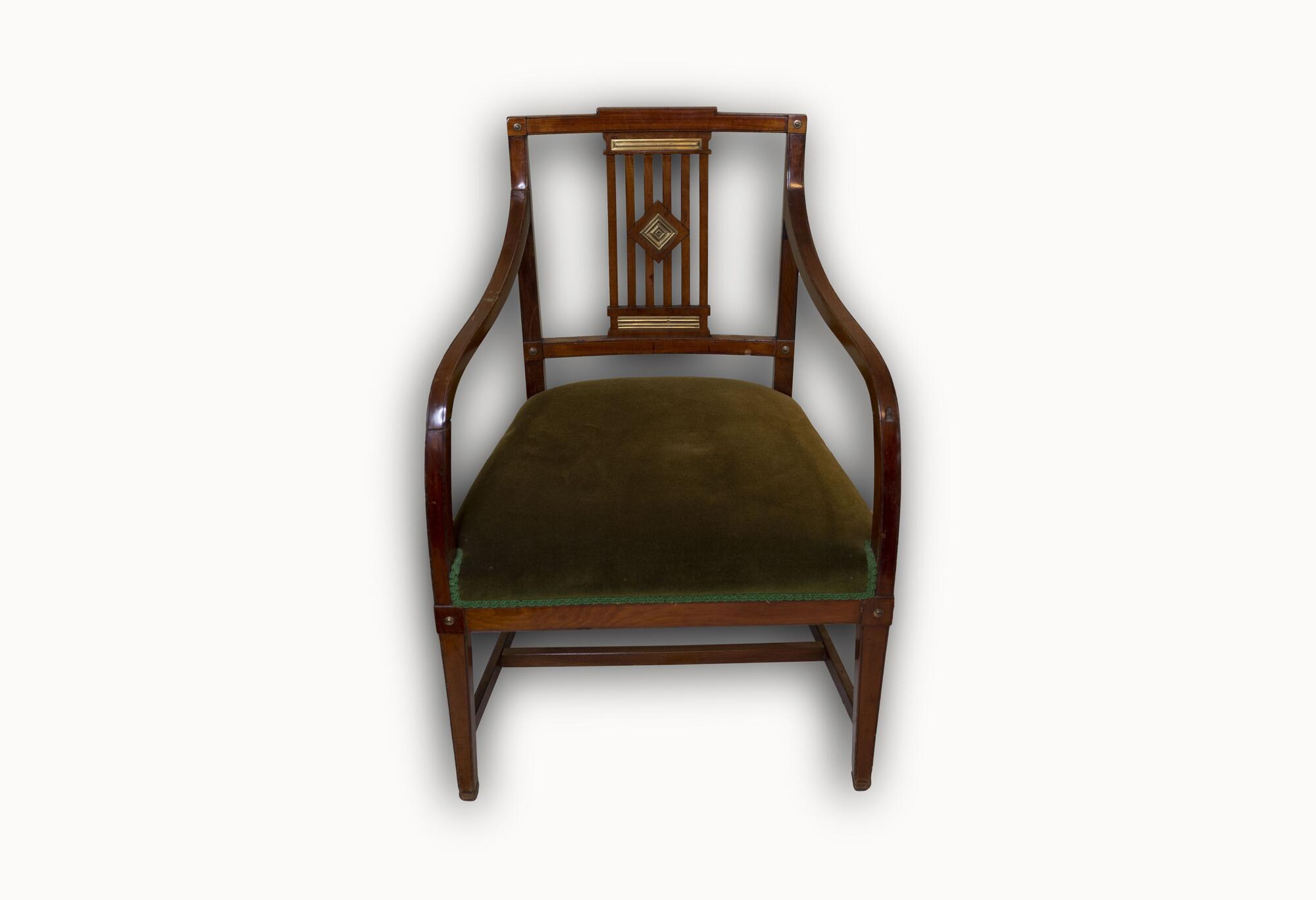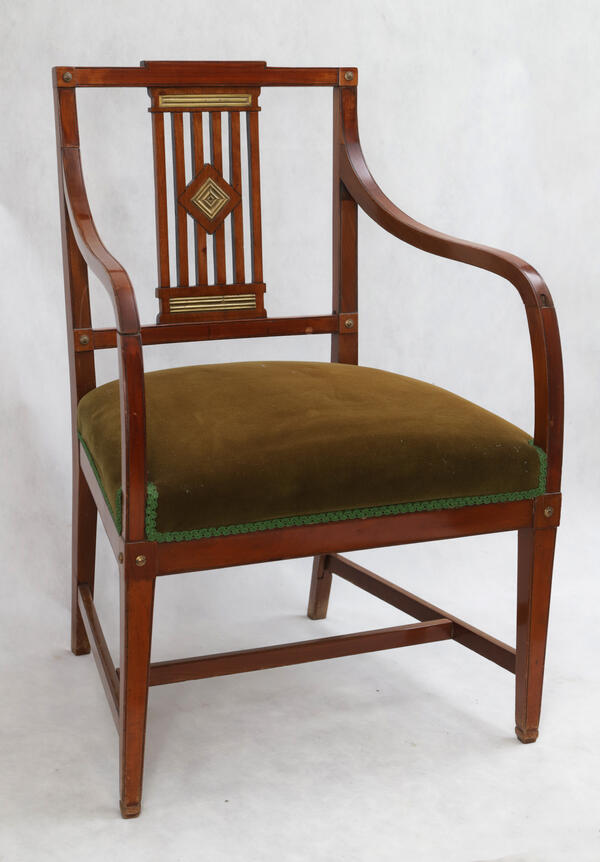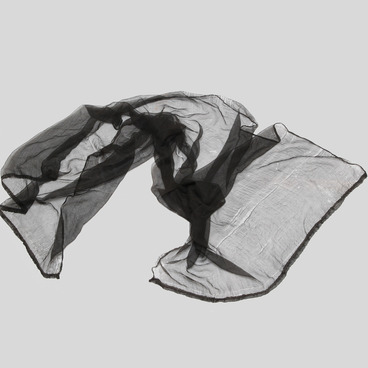The chair on display is made in the Jacob style and may have been part of a private collection or a palace interior.
The Jacob style originated in the late 18th century and became famous in the mid-19th century. The founder of the style was Georges Jacob, a French cabinetmaker from an ordinary peasant family. He was born in Cheny, Burgundy, on July 6, 1739. At the age of fifteen, Georges came to Paris and was apprenticed to the furniture maker Louis Delanois.
At first, the workshop of Georges Jacob produced mahogany tables, armchairs, and chairs with carvings, bronze garlands or brass rosettes, and tapestry upholstery in the style of Louis XVI. However, in the 1780s, Jacob decided to forgo the magnificent carvings, gilding, and heavy bronze decor and began to make mahogany furniture in the Etruscan style, which was just gaining popularity.
With the beginning of the Empire era, Jacob began to collaborate with Charles Percier and Pierre Fontaine — Napoleon Bonaparte’s court decorators. He carried out the orders of Mme Julie Récamier, a French socialite who is depicted lying on the day bed made by Jacob in the famous portraits by Jacques-Louis David and François Gérard. Thus, Jacob’s furniture, among other things, marked the transition to the ceremonial Empire style and the chamber Récamier style that was influenced by antique models. Furniture in the Jacob style is durable, esthetic, expensive, and always handmade.
Despite being previously known to Russians, the furniture of the Parisian Jacob workshop came into fashion only after the Patriotic War of 1812. The omnipresence of neoclassical mahogany furniture led to all products of this type, even those made in Russia, being called simply “Jacob” or “Russian Jacob”.
In Saint Petersburg, such furniture was made by the Meyer brothers’ workshops, while Moscow and suburban workshops had serf craftsmen working on the furniture based on French models. Furniture in the Jacob style of the first half of the 19th century is characterized by strict outlines, mahogany veneer, thin brass decor, rounded corners, soft or “washbasin” backs, and seats upholstered with striped calico.
The Jacob style originated in the late 18th century and became famous in the mid-19th century. The founder of the style was Georges Jacob, a French cabinetmaker from an ordinary peasant family. He was born in Cheny, Burgundy, on July 6, 1739. At the age of fifteen, Georges came to Paris and was apprenticed to the furniture maker Louis Delanois.
At first, the workshop of Georges Jacob produced mahogany tables, armchairs, and chairs with carvings, bronze garlands or brass rosettes, and tapestry upholstery in the style of Louis XVI. However, in the 1780s, Jacob decided to forgo the magnificent carvings, gilding, and heavy bronze decor and began to make mahogany furniture in the Etruscan style, which was just gaining popularity.
With the beginning of the Empire era, Jacob began to collaborate with Charles Percier and Pierre Fontaine — Napoleon Bonaparte’s court decorators. He carried out the orders of Mme Julie Récamier, a French socialite who is depicted lying on the day bed made by Jacob in the famous portraits by Jacques-Louis David and François Gérard. Thus, Jacob’s furniture, among other things, marked the transition to the ceremonial Empire style and the chamber Récamier style that was influenced by antique models. Furniture in the Jacob style is durable, esthetic, expensive, and always handmade.
Despite being previously known to Russians, the furniture of the Parisian Jacob workshop came into fashion only after the Patriotic War of 1812. The omnipresence of neoclassical mahogany furniture led to all products of this type, even those made in Russia, being called simply “Jacob” or “Russian Jacob”.
In Saint Petersburg, such furniture was made by the Meyer brothers’ workshops, while Moscow and suburban workshops had serf craftsmen working on the furniture based on French models. Furniture in the Jacob style of the first half of the 19th century is characterized by strict outlines, mahogany veneer, thin brass decor, rounded corners, soft or “washbasin” backs, and seats upholstered with striped calico.





